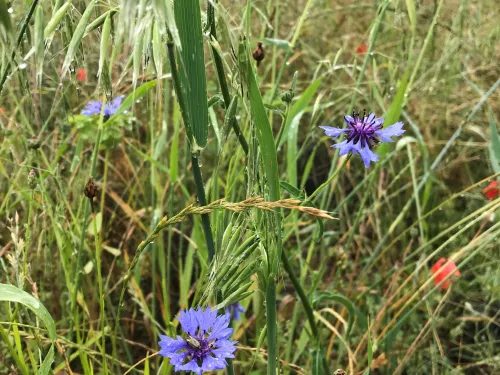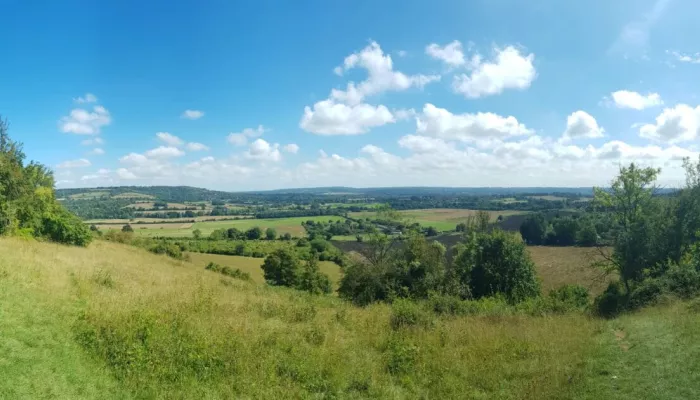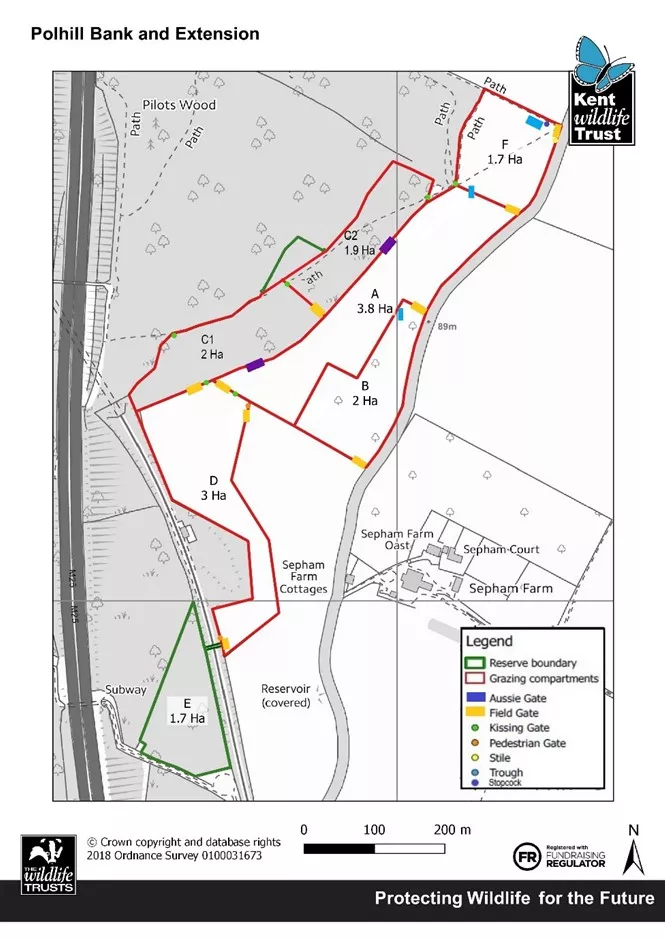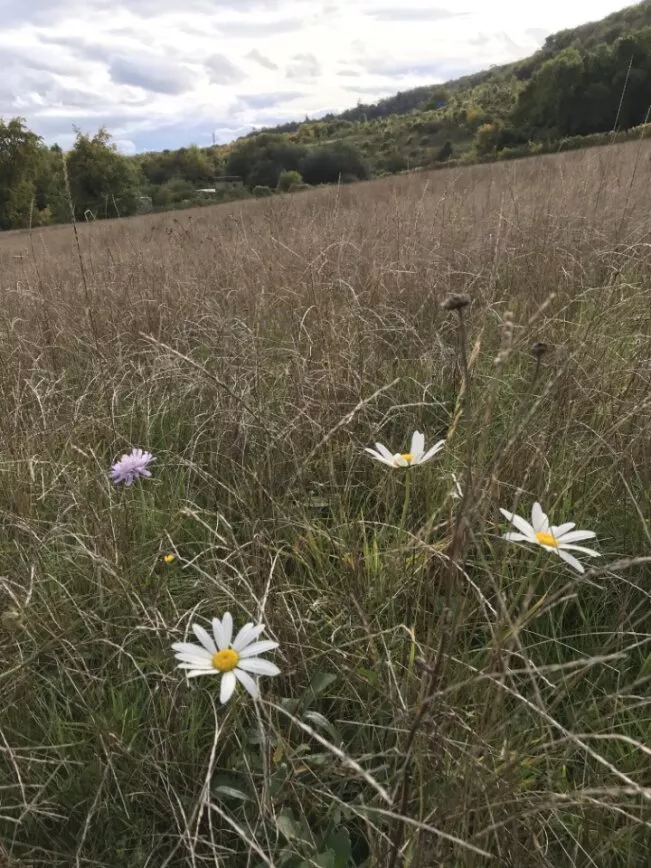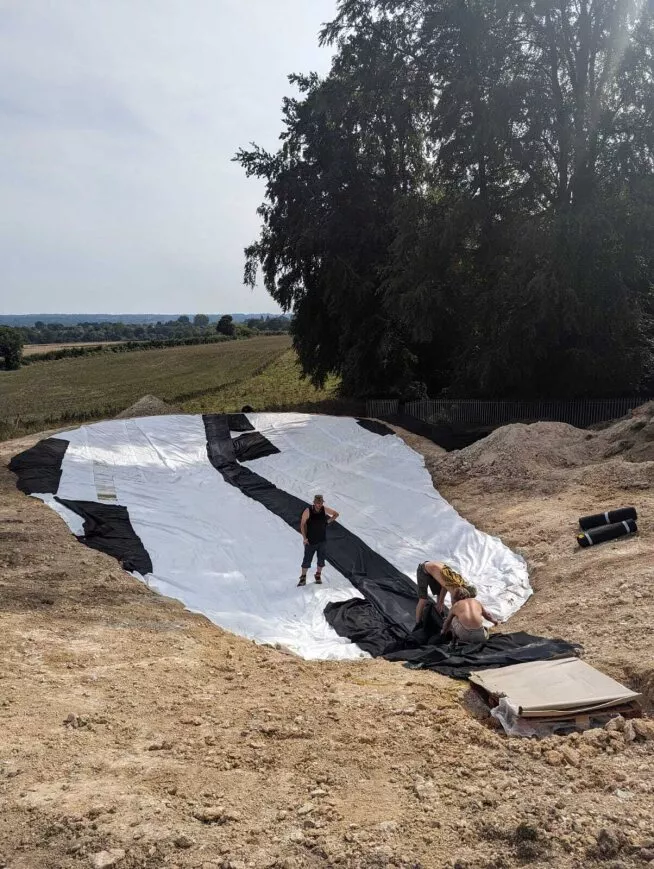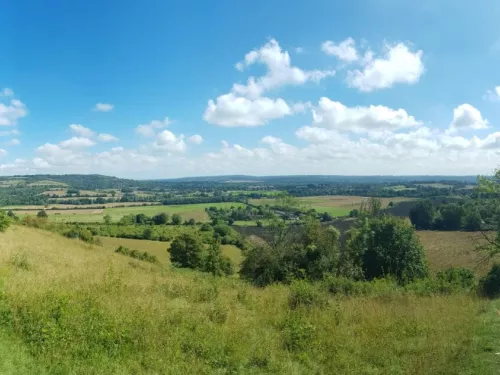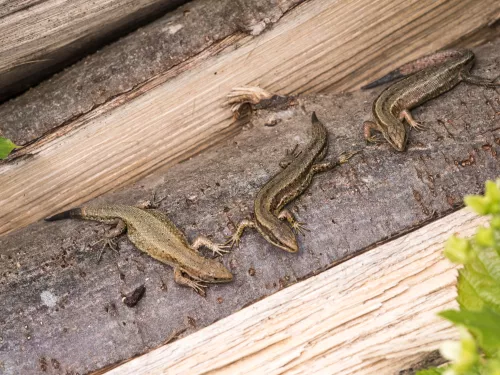Already, the grazing livestock is making use of it, and you can see the disturbed patches of ground where they stop to drink. These light disturbances to the ground introduce all sorts of opportunities for invertebrates and rarer plants. Similarly, the work to create the pond inevitably created some ground disturbance and has actually brought some of the chalk to surface which had been long hidden by farming topsoil. This scarp slope is a potential contender for the reintoduction of the rare Kentish milkwort, which The Species Recovery Trust has been focusing on for a few years.
Along the bottom of compartment D, we planted a triple-width species-rich hedgerow made up primarily of hawthorn and other spikey, berry-bearing hedging. The 99% survival rate here after planting was satisfying to say the least!
Every year, volunteers help us with brushcutting on the main part of the reserve in order to keep the levels of wayfarer and dogwood scrub down. Our restoration work continues!
We’ve been so pleased to see the spread of common dodder down the steep chalk grassland slopes, as well as a variety of orchid species. Down at the bottom of the bank, hound’s tongue is now doing rather well too. In fact, 6 or 7 of the target chalk grassland (or ‘indicator’) species are now present.
While it’s hard to say exactly what’s done it, we’re also getting far more sightings of buzzards and kites in the area since our work began. Indeed, this could be attributed in part to our work at Polhill Bank, but also to the landscape-scale collaborations we have worked on with landowners in the broader area.
The efficacy of wilding, nature-based solutions, habitat connection, and nature-friendly farming is all evident here.
We hope to bring the positive transformation we’ve seen here elsewhere. Last time we asked for public support with the purchase of land at Polhill Bank, we were blown away by the generosity of our members, supporters, and the public – and we recently did it again with your help. Our Protect Polhill appeal was a roaring success! We're looking forward to getting started, so keep an eye out for updates on how the project progresses.
